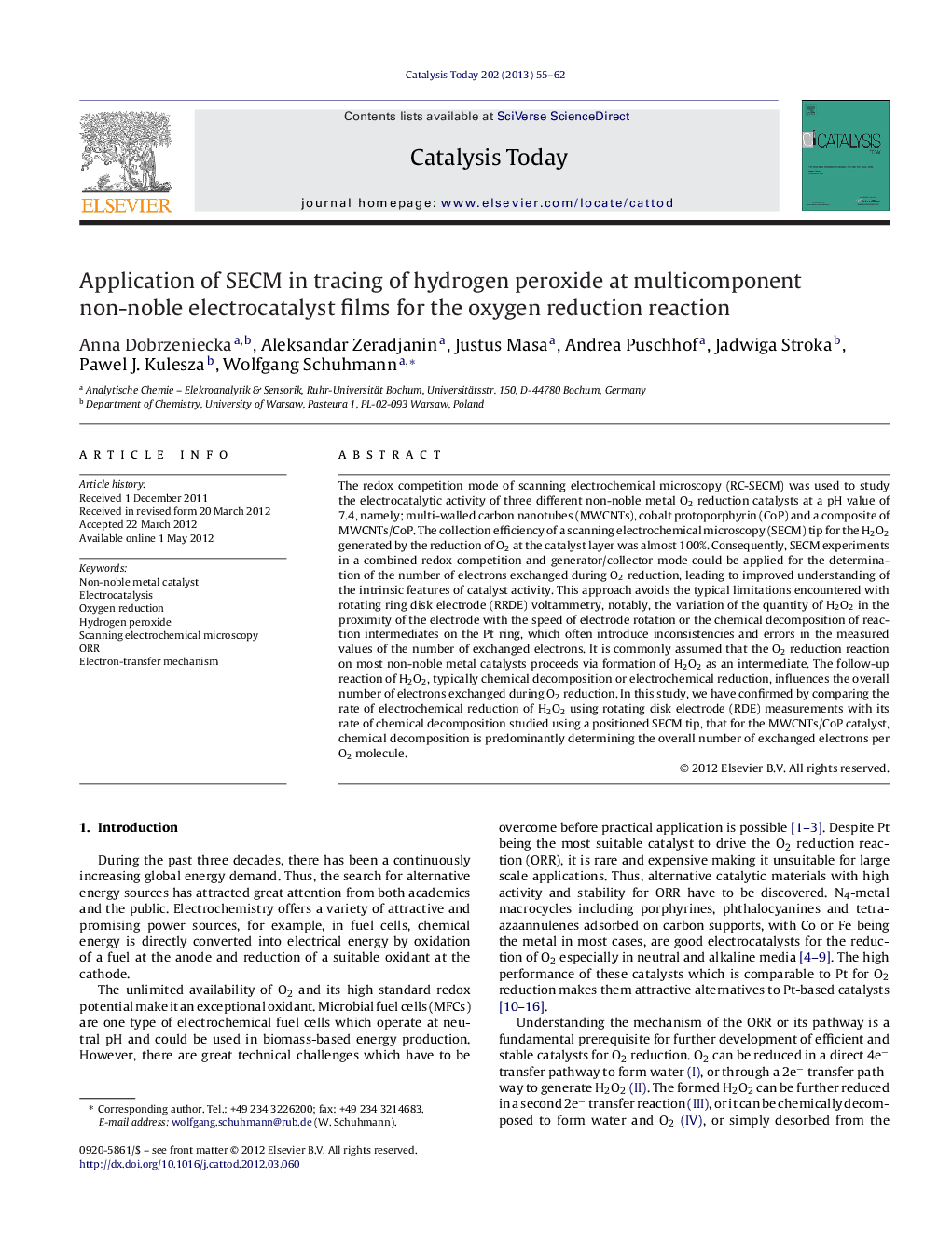| کد مقاله | کد نشریه | سال انتشار | مقاله انگلیسی | نسخه تمام متن |
|---|---|---|---|---|
| 54996 | 47036 | 2013 | 8 صفحه PDF | دانلود رایگان |

The redox competition mode of scanning electrochemical microscopy (RC-SECM) was used to study the electrocatalytic activity of three different non-noble metal O2 reduction catalysts at a pH value of 7.4, namely; multi-walled carbon nanotubes (MWCNTs), cobalt protoporphyrin (CoP) and a composite of MWCNTs/CoP. The collection efficiency of a scanning electrochemical microscopy (SECM) tip for the H2O2 generated by the reduction of O2 at the catalyst layer was almost 100%. Consequently, SECM experiments in a combined redox competition and generator/collector mode could be applied for the determination of the number of electrons exchanged during O2 reduction, leading to improved understanding of the intrinsic features of catalyst activity. This approach avoids the typical limitations encountered with rotating ring disk electrode (RRDE) voltammetry, notably, the variation of the quantity of H2O2 in the proximity of the electrode with the speed of electrode rotation or the chemical decomposition of reaction intermediates on the Pt ring, which often introduce inconsistencies and errors in the measured values of the number of exchanged electrons. It is commonly assumed that the O2 reduction reaction on most non-noble metal catalysts proceeds via formation of H2O2 as an intermediate. The follow-up reaction of H2O2, typically chemical decomposition or electrochemical reduction, influences the overall number of electrons exchanged during O2 reduction. In this study, we have confirmed by comparing the rate of electrochemical reduction of H2O2 using rotating disk electrode (RDE) measurements with its rate of chemical decomposition studied using a positioned SECM tip, that for the MWCNTs/CoP catalyst, chemical decomposition is predominantly determining the overall number of exchanged electrons per O2 molecule.
Figure optionsDownload high-quality image (105 K)Download as PowerPoint slideHighlights
► The number of exchanged electrons during ORR was determined using RC-SECM.
► Microelectrode was used to monitor the decompostition of hydrogen peroxide.
► On MWCNTs/CoP decomposition of H2O2 was more favorable than electroreduction.
Journal: Catalysis Today - Volume 202, 15 March 2013, Pages 55–62